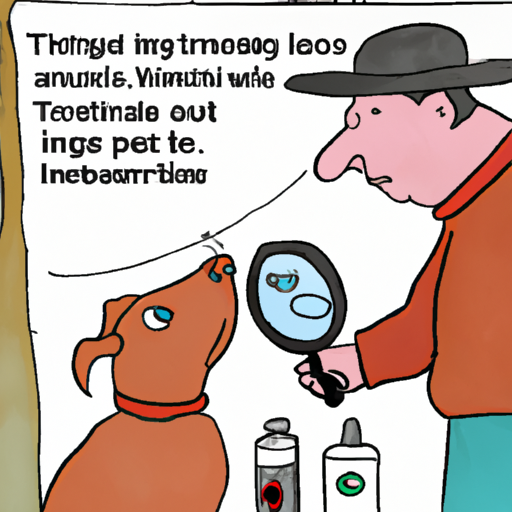As a caregiver, you understand the importance of keeping your furry friends healthy and happy. Nasal mites in dogs aren’t just a minor inconvenience; they can lead to serious health issues if left untreated. In this guide, we’ll provide you with a comprehensive understanding of nasal mites and the best ways to get rid of them.
1. Understanding Nasal Mites
Nasal mites, also known as Pneumonyssoides Caninum, are tiny parasites that live in the nasal passages and sinuses of dogs. They are microscopic and often cause a range of symptoms that can be quite distressing for your pet.
Symptoms of Nasal Mites
- Sneezing
- Nasal discharge
- Excessive scratching of the nose
- Nosebleeds
- Reverse sneezing (forceful and prolonged inhalation through the nose)
- Facial discomfort
2. Diagnosing Nasal Mites
If you notice any of the symptoms above, it’s crucial to get your pet checked by a veterinarian. The vet will usually perform a nasal swab or endoscopy to confirm the presence of nasal mites.
| Procedure | Description |
|---|---|
| Nasal Swab | A swab is taken from the dog’s nostril and examined under a microscope. |
| Endoscopy | A small camera is inserted into the dog’s nasal passage to visually confirm the presence of mites. |
3. Treatment Options
Once nasal mites have been confirmed, it’s time to treat your dog. The most common treatments for nasal mites in dogs include:
-
Ivermectin: This is a medication that can be administered orally, topically, or through injection. It’s highly effective in killing nasal mites but should be used with caution in certain breeds that are sensitive to it.
-
Milbemycin Oxime: This is an alternative to Ivermectin, often used in breeds that are sensitive to Ivermectin. It is generally administered orally.
-
Nasal Rinse: A nasal rinse can be done at the vet’s office using a saline solution. This procedure helps to remove mites and soothe the nasal passage.
Remember, never self-medicate your dog. Always consult with a vet before starting any form of treatment.
4. Preventive Measures
As they say, prevention is better than cure. Here are some steps you can take to prevent nasal mites in dogs:
- Regular vet check-ups: Routine check-ups can help detect the presence of nasal mites early, making them easier to treat.
- Keeping your dog’s living area clean: A clean environment is less likely to harbor mites.
- Avoid contact with infested dogs: Nasal mites can be transmitted from one dog to another, so try to avoid places where your dog might come into contact with infested dogs.
5. Frequently Asked Questions (FAQs)
Q: Can humans get nasal mites from dogs?
A: No, nasal mites in dogs cannot be transmitted to humans.
Q: How long does it take to get rid of nasal mites?
A: The treatment duration may vary depending on the severity of the infestation, but generally, it takes about 1-2 weeks.
Q: Can nasal mites be prevented?
A: While there’s no surefire way to prevent nasal mites, regular vet check-ups and maintaining a clean environment can reduce the risk.
Q: Are nasal mites a common problem in dogs?
A: Nasal mites are quite common, especially in dogs that come into contact with infested dogs.
Q: Can nasal mites lead to other health issues?
A: If left untreated, nasal mites can cause serious health issues such as nasal blockage, sinusitis, and in severe cases, they can spread to the brain.
In conclusion, nasal mites in dogs are a serious issue that requires immediate attention. As a caregiver, your role is pivotal in ensuring the health and happiness of your pet. By understanding nasal mites, recognizing their symptoms, and seeking timely treatment, you can ensure a healthy and comfortable life for your furry friend.



